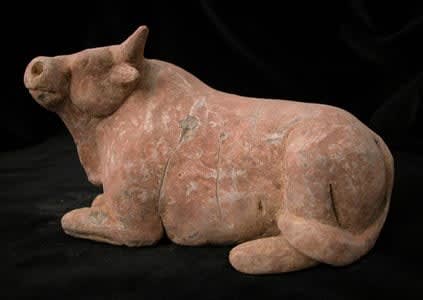Tang Terracotta Sculpture of a Recumbent Ox, 618 CE - 906 CE
Terracotta
4
H.909
Further images
During the Tang Dynasty, sculptural effigies of domesticated animals were often interred in the tombs of nobility and elite members of the social hierarchy. Created in all media, these sculptures...
During the Tang Dynasty, sculptural effigies of domesticated animals were often interred in the tombs of nobility and elite members of the social hierarchy. Created in all media, these sculptures accompanied the spirit of the deceased into the afterlife. While similar examples exist, most were found harnessed to wagons and carts and were meant to function as beasts of burden. However, this sculpture was discovered buried as part of a herd, contained inside a sculpted miniature pen with other domesticated animals, suggesting that this ox served as nourishment. Aside from function, this sculpture is also remarkable for its exquisite state of preservation. During the Tang Dynasty, the Chinese believed that the afterlife was a continuation of our earthly existence. Thus, logically, as we require food to nourish our bodies on earth, so too will we require food to nourish our souls in the afterlife. Created to serve as food for the afterlife, this work is more than a mere sculpture; it is a gorgeous memorial to the religious and philosophical beliefs of the Tang Dynasty. This cow effigy has served its eternal purpose well.







